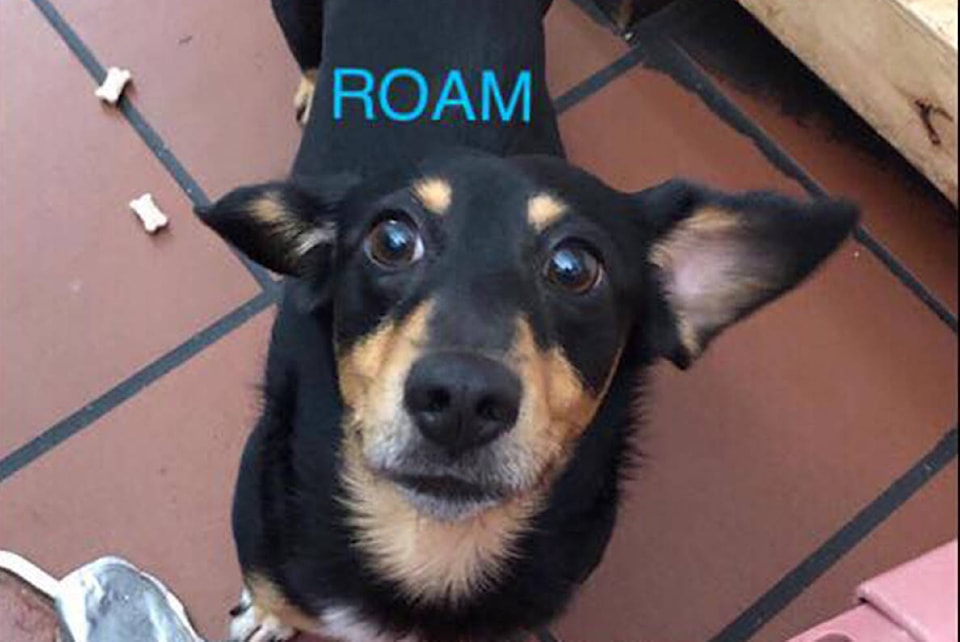In the panic that follows losing a pet, people often miss vital steps that could help bring their animal home, says ROAM, a Victoria non-profit that uses Facebook and a crew of volunteers to reunite people with dogs, cats and other critters on the lam.
In 2018, ROAM reunited more than 1,300 dogs and 717 cats with their owners. Numbers in 2019 are already catching up: 1,139 dogs and 520 cats have been reunited with people between January and July alone.
The organization’s rescue work ranges from simple Facebook posts to in-person rescues – in June dozens of volunteers worked to rescue a small Yorkshire terrier who managed to travel a handful of kilometres from Gyro Beach to a remote island 50-feet offshore.
READ ALSO: Tiny Yorkshire terrier Poppie survives days on remote island
ROAM administrator Terry Mah says most of the canine cases they get aren’t so extreme. He says dogs frequently slip out of their leashes or roam too far from their people during a walk or hike. He says one critical error people make is immediately heading out on the trail to search.
“If you are walking the trails, the dog will pick up your scent and try to follow it,” Mah said. “We suggest that the person bonded to the dog stays in the vehicle and lets others go out searching.
“Chances are, the dog will go back to the parking lot,” Mah said. “That’s not always the case, but a lot of times the dog will go back.”
Cats are a different story, Mah says. They can be more difficult to find but are often only within a one-kilometre radius of where they went missing. Search your neighbourhood — and check under decks and behind sheds. When scared and traumatized, cats often hide in small nooks and crannies. Their instincts — to avoid becoming prey — may immobilize them to the point that they won’t respond to your voice or even a treat bag.
When searching for a pet, it’s important to stay calm and collected, Mah says, since the animals can pick up on your nerves.
“When your dog is missing your adrenaline is pumping pretty good, use deep breaths and calm energy — dogs and cats can pick that up.”
If initial search efforts are unsuccessful, it may be time to crowdsource for help.
READ ALSO: Dog that fell out of car in Victoria reunited with owner
To start, send a report to one or more of the volunteer-run networks such as ROAM (Reuniting Owners with Animals Missing), Vancouver Island Lost Pets Database, FLEC (Finding lost and escaped cats) and FLED (Finding lost and escaped dogs).
Next, check the ‘Impounded Animals’ section of the website for your local pound. For Victoria, Oak Bay and Esquimalt, that’s Victoria Animal Control Services (VACS). For Saanich and other Greater Victoria communities, the CRD Pound. You can also file a missing pet report with VACS.
VACS also recommends checking websites like UsedVictoria and Craigslist (Pets section under the Found section) as well as Victoria Lost Pets.
Call local veterinarians, animal shelters and even sadly, the agency responsible for picking up deceased pets. In Greater Victoria communities that is either the municipality’s public works department or CRD Animal Control.
Create a simple, clear poster with unique details and contact information.
And finally, consider making a “pee trail.”
This search method involves diluting the urine of a bonded owner or animal with water and spraying it where the pet was last sighted, creating a ‘pee trail’ back home or to a vehicle. VACS recommends spraying one squirt of the mixture every 25-30 feet and to keep it away from busy roads.
READ ALSO: Oak Bay iguana located in dryer vent
When it comes to preventing the devastation that comes with a lost pet, tattooing, micro-chipping and using a secure harness are recommended.
VACS says pets brought in without identification — which makes up about 99 per cent of cats — are often adopted out or are taken in by those who find them.
For more information on finding a missing pet, visit vacs.ca.
